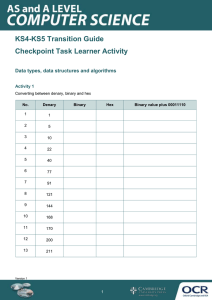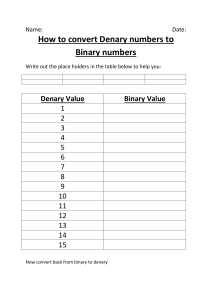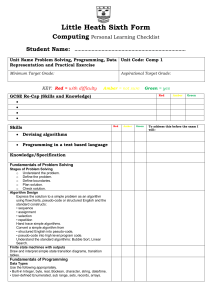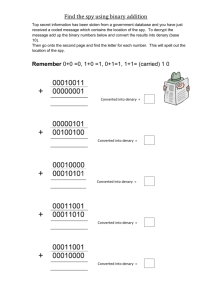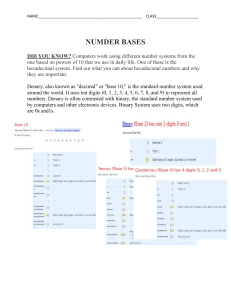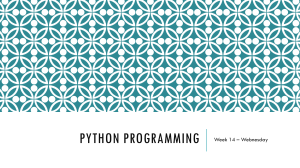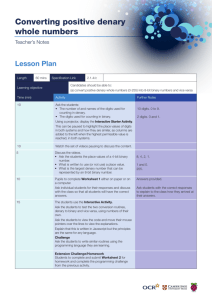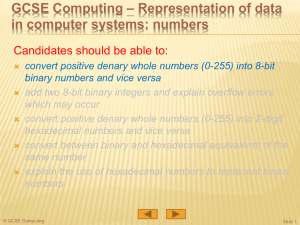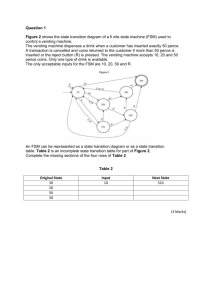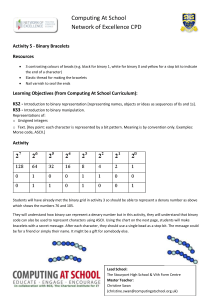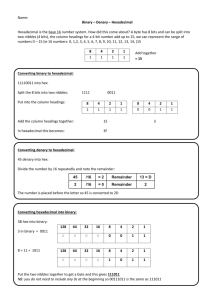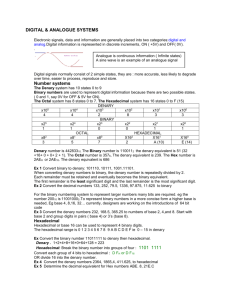256 128 64 32 16 8 4 2 1 - Metal
advertisement
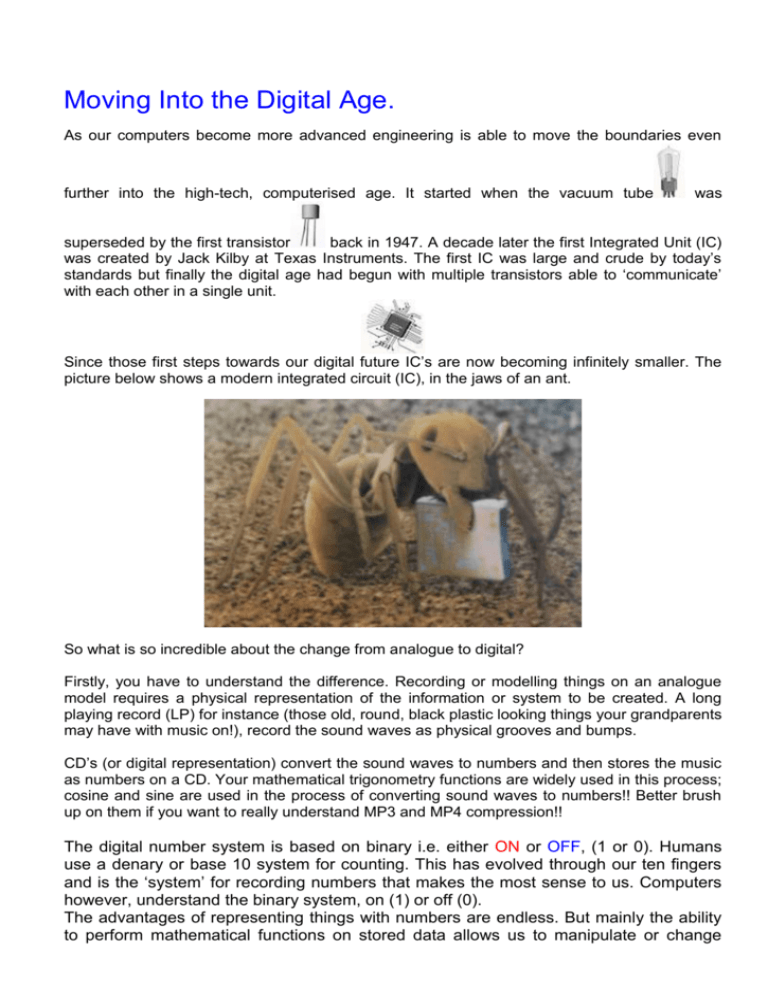
Moving Into the Digital Age. As our computers become more advanced engineering is able to move the boundaries even further into the high-tech, computerised age. It started when the vacuum tube was superseded by the first transistor back in 1947. A decade later the first Integrated Unit (IC) was created by Jack Kilby at Texas Instruments. The first IC was large and crude by today’s standards but finally the digital age had begun with multiple transistors able to ‘communicate’ with each other in a single unit. Since those first steps towards our digital future IC’s are now becoming infinitely smaller. The picture below shows a modern integrated circuit (IC), in the jaws of an ant. So what is so incredible about the change from analogue to digital? Firstly, you have to understand the difference. Recording or modelling things on an analogue model requires a physical representation of the information or system to be created. A long playing record (LP) for instance (those old, round, black plastic looking things your grandparents may have with music on!), record the sound waves as physical grooves and bumps. CD’s (or digital representation) convert the sound waves to numbers and then stores the music as numbers on a CD. Your mathematical trigonometry functions are widely used in this process; cosine and sine are used in the process of converting sound waves to numbers!! Better brush up on them if you want to really understand MP3 and MP4 compression!! The digital number system is based on binary i.e. either ON or OFF, (1 or 0). Humans use a denary or base 10 system for counting. This has evolved through our ten fingers and is the ‘system’ for recording numbers that makes the most sense to us. Computers however, understand the binary system, on (1) or off (0). The advantages of representing things with numbers are endless. But mainly the ability to perform mathematical functions on stored data allows us to manipulate or change things easily. Microsoft Word is a digital representation of an analogue typewriter. The advantages are endless, we can erase and re-write text (impossible on a typewriter, errors meant the whole document had to be re-typed!) and manipulate the type of data we see such as convert lines to shapes, enter pictures and tables etc. All this is possible through the computers ability to process vast amounts of numbers with incredible speed. Each character or letter, on the keyboard is known to the computer as a byte; there are eight bits in a byte. The number represented by a series of 0’s and 1’s. Our denary system represents the number 361 as:- 361 in denary 100 10 1 3 6 1 3 x 100’s (102 ) 6 x 10’s (101 ) 1x1 (100 ) [3 x 100 (102 )] + [6 x 10 (101 )] + [1 x 1 (100 )] = 361 However, 361 in binary is VERY different! 256 128 64 32 16 8 4 2 1 1x 256 (28 ) 1 0 1 1 0 1 0 0 1 0x 128 (27 ) 1x 64 (26 ) 1x 32 (25 ) 0x 16 (24 ) 1x 8 (23 ) 0x 4 (22 ) 0x 2 (21 ) TOTAL= 361 1 x 1 (20 ) [1x256(28 )] + [0x128(27 )] +[1x64(26 )] +[1x32(25 )] +[1x16(24 )] +[1x8(23 )] +[0x4(22 )] +[0x2(21 )] +[1x1(20 )] = 361 Try the following exercises for yourself! Write the following binary numbers as base 10 1. 111 2. 01001 3. 10010001 You will need to enter the digits into the grid below, convert to denary and then add the numbers together. Copy out the table below into a Word or Excel and use to convert binary to denary. 256 128 64 32 16 8 4 2 1 Write the following base 10 numbers as binary. You will need to use the same grid above. 4. 6 5. 27 6. 167 Because binary systems use such long numbers it is easier to talk in ‘Kilo’ or ‘Mega’ or ‘Gigabytes’. Using Word put the following number sizes in order from the smallest to the largest (there are 14 in total). How many zeros does each number have? How does this relate to the power of 10 (i.e. 109) for each number? Put the power after each number (i.e. kilo is 1000 or 103) 7. Giga, milli, micro, nano, mega, peta, tera nano, pico, centi, deci, hecto, kilo, exa
